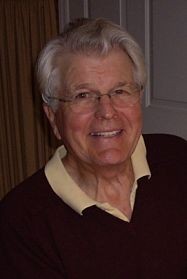Philip Kenney’s “Where Roses Bloom”
Where Roses Bloom, Philip Kenney’s recent book of poetry, is an impressive body of work, especially when the poet’s novel, Radiance, is included in any consideration of the author’s output. The title might suggest sentimentality in his approach. “Roses,” as a word, has many connotations. But do not be misled. Kenney’s work is fresh, challenging, and poignant.
Kenney is thoroughly at home in the contemporary poetic aesthetic that decades ago abandoned traditional form, rhyming, and meter. Readers invoke more subjective standards in judging a poet’s work. The two measures that come to mind immediately for Where Roses Bloom for this reviewer are accessibility and perspective. Kenney’s work is immediate. Readers are engaged and enthralled rather than mystified or perplexed. Kenney wants to reach his readers. His work evokes feeling through freshly moving scenes and situations that ring with authenticity.
As for perspective, Kenney places himself as the poet staunchly into his verse. He has a unique voice. He has not hidden behind convention, intricate conceits or gimmicks. Perspective, after all, helps the reader establish the author’s proximity to the concepts and feelings of a work. At one extreme, the poem can stand alone as a work of art saying little or nothing about the poet. Some of the greatest poetry in the language represent the standard in this regard. John Donne, Alexander Pope, John Milton. William Carlos Williams. The poet is in the work by implication as the mind and heart behind the composition.
At the other end of the continuum, verse is inseparable from the poet. The writer’s thoughts and feelings are presented as such. The writer is in the poem in person. Disaster can lie at either end of the continuum ranging on the one hand from self-indulgent, narcissist compositions to cerebral esoteric works on the other that come off as clinically precise but fail to give readers a handle or buy in.
Kenney is in his poetry. Readers can feel his presence.
Where Roses Bloom is almost three books in one based upon the subject matter and the approach Kenney takes. The first is a short collection of longer poems about others Kenney has observed. These poems struck this reviewer as a in the tradition of Edward Arlington Robinson (Richard Cory, Mr. Flood’s Party) in that the focus is on appearances and the extent to which people will go to maintain an image, or if not an image, a state of apparent composure. Kenney is a psychotherapist. He is a seer. In his Preface, he carefully explains that the personalities depicted in his poetry are composites and do not represent any one person or character. As he writes of himself in The counselor: A self portrait
To me I resemble the tavern keeper
All day behind the counter
Not knowing who will drop by, I listen
And fill the glasses.
In the same poem, he writes:
Next to the wisdom that is yours I sound abstract,
Contrived, while yours is the beauty
Of flowers blooming on a desert floor.
In Toes, Kenney draws one man’s story to the end as follows:
He never spoke a word of those toes,
Though for years they had not straightened,
For years they tucked their heads
Under the ball of his foot,
Like frightened snails in a shell
And never came out.
Observations as captured in the imagery in the passage above set Kenney’s verse apart. Metaphors represent thought and feeling in a way that is emphatic and powerful. In some passages, as in the above also, the poet may work a little too hard for his reader and economy is forfeit. The repetition of “for years” is superfluous and the passage could effectively ended on the penultimate line after the word “snails.”
Philip Kenney is a father, a husband, a son, a brother and a pet owner. In this second group, he writes about all. He seems at his exuberant best when writing about his two sons. Saturday, for example, is “The day of bacon and French toast: Hoping the boys will sleep in.” In Make me into something, he writes:
Once upon a time, when they were little boys,
A collection of wiggles and shrieks,
I threw them to the couch and made each into pizza pie.
It was a dramatized game of tickle, which is
Travel to the outer limits of pleasure.
Some of the longer works really are prose poems. The generous phrasing takes the reader by the hand to assure nothing slips past. A few lines later in the same poem, he continues:
Rolled out the dough, rolled it back I into a ball
Kneaded it with my fingers (this killed them)
Flipped it high in the air, twirling like a galaxy,
Spread it out on the board, gingerly applied the sauce
And cheese; pepperoni sent the squealing to heaven.
Any man who has been a father to sons feels the fun and laughter in this piece. His poem Georgio, Georgio, Help! is filled with the same glee. The passage quoted is but one of several moving poems Kenney has composed and dedicated to his sons. They are full of fun, whimsy, tenderness, and, yes, love.
Of his elderly mother’s efforts at signing a birthday card, he writes, The failed attempts stained a happy greeting. They lay on the paper like dead inchworms Dried out and curled up. The poet’s mother is the subject of another moving piece, Her last possession, which closes with the stanza below:
You and I can’t comprehend
Existence without memories –
But there she is
Walking down the corridor,
A smile, that determined look,
Her last possessions.
For all the intimacy conveyed – the preciousness (at the risk of using the abused word) – readers will come to know Kenney as an observer of all the life around him. He relates to his everyday surroundings. The squirrels, the birds, the moon, the sun, a daddy-longlegs, even a fugitive from justice are all in his world with him. Readers find him immersed rather than standing apart. He writes of being nearly overwhelmed, and if not that, of bringing his perception of his own life down to the smallest things that are close at hand and real for him. Touchstones. In the refining and narrowing of his focus, readers come to know a man who is very much aware of himself, the mystery of his existence, and the joys that are available to him every day. Humility enables vision just as pride or avarice diminish it. There is no grandiosity in Kenney’s work. He is a keen observer.
Kenney’s wisdom shines in several of his poems. In a third grouping of compositions, his tone turns more pensive. His subjects, more universal. His comments about what troubles about the world today are often oblique, as in Hours of Blue, he writes:
We the tall strangers, oblivious
To the blisters on our skin
To the eruptions in our brains
Lost wanderers, fearful of dying
Fearful of longings, unable to stop the plunder
Unable to listen, or be quiet.
Or more allegorically in What the cats trust
Instead of believing in the forgiveness of God
Why not recognize the absence of judgement?
And stop setting up rituals of repentance.
And when the hand of being
Picks you up from beneath the wheels of a car,
Don’t swipe at this with your claws.
All of Kenney’s poems seek a reassuring resolution. He is no cynic. That said, readers will not come away from his work with an understanding of his beliefs or admonitions of faith. The poet stands for peace. Peace within. Peace in the world. If anything, he urges movement away from trouble, tension and distress toward acceptance, contentment, and serenity. But he doesn’t preach. He demonstrates. He urges. He portrays. The scope of his work spans most of the stages of life – childhood, the ages of love, of parenthood, of the diminishing years, of old age and passing beyond. His work could be tighter. He could leave more to the reader than he does. Pagination orphans lines at times that can result in a poem being misread if the reader is not alert. He could find alternatives for words like rose, precious, cherish – typical stock response evokers, but his integrity and the authenticity of his vision is never in doubt. His images are fresh and arresting. He knows his subject. He doesn’t talk about anything but of it. Where Roses Bloom needs to be read and reread. For the book is indeed like a bloom itself and it opens to yield more every time it is shown the light.
Thanks for visiting my web site. Philip Kenney’s books are available at Amazon. Simply search under his name. While you are here, I invite you to look through the other pages of my site. Please feel free to enter a comment in the area provided below. May the joys of the holiday season be with you.



